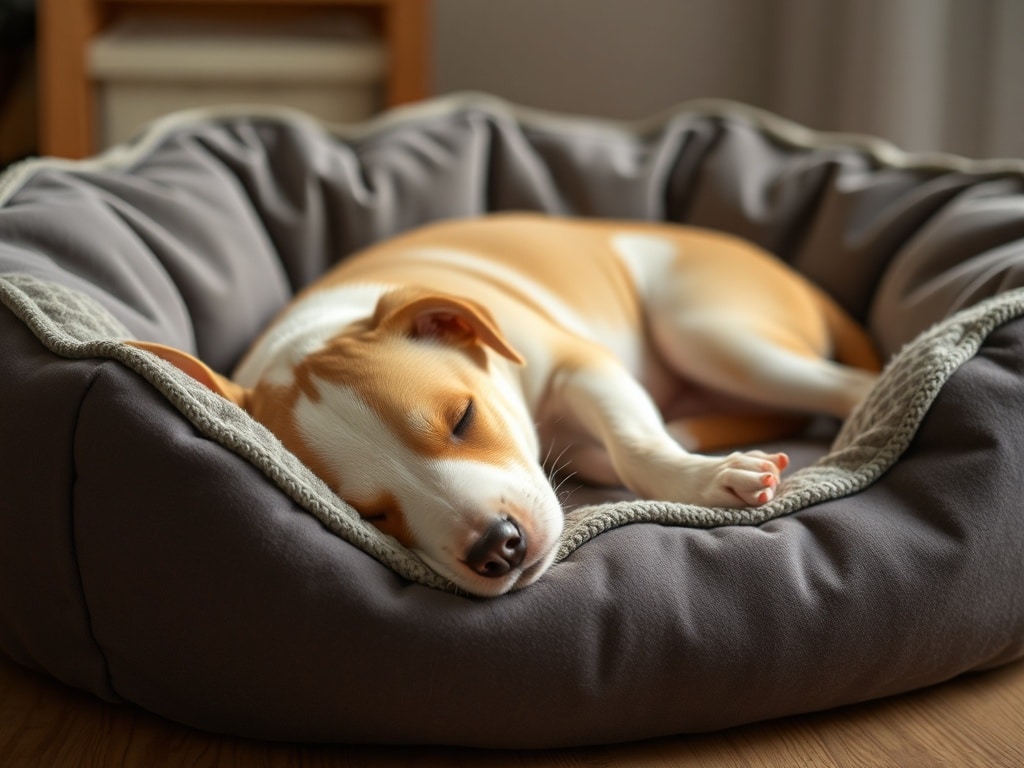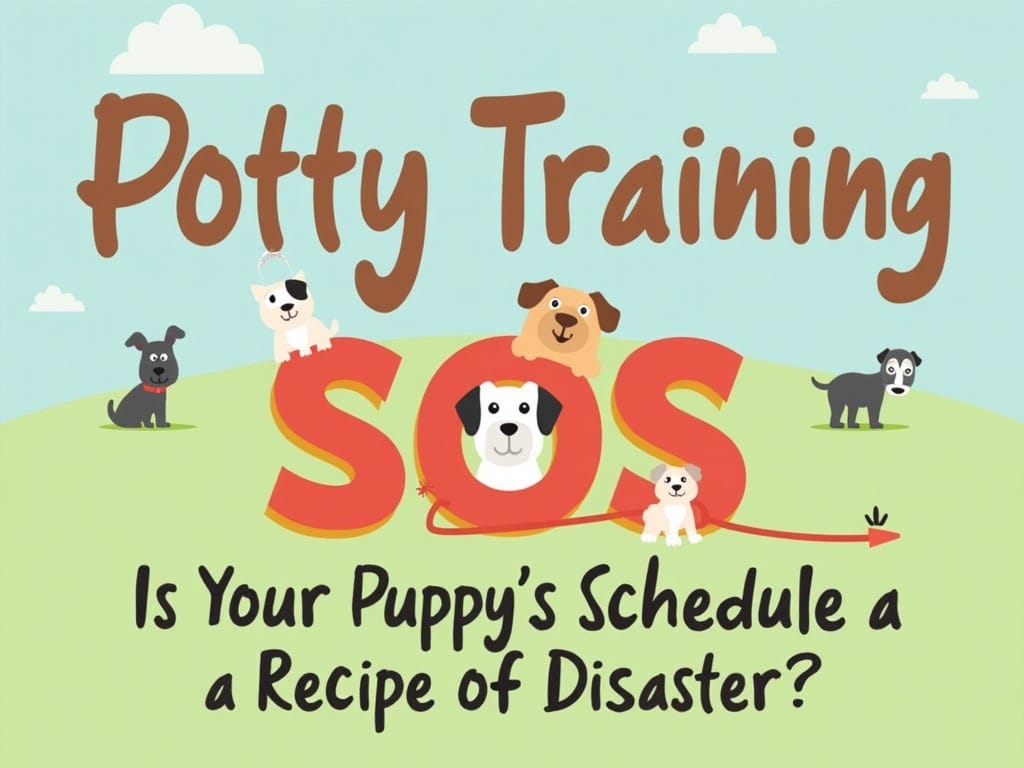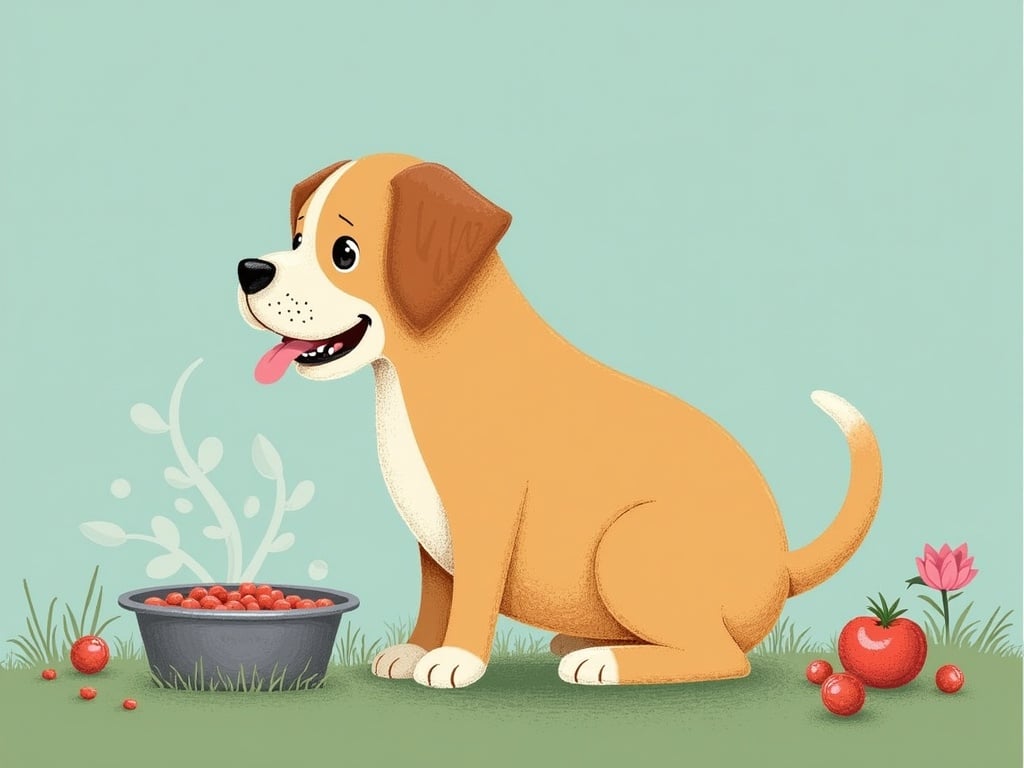Potty Training SOS: Is Your Puppy’s Schedule a Recipe for Disaster?
Bringing a new puppy home is a joyous occasion filled with cuddles, playful antics, and the undeniable charm of tiny paws. However, amidst the excitement, the daunting task of potty training looms large. A successful puppy potty training schedule is the cornerstone of a happy, accident-free home. But what happens when that schedule goes awry? Is your current plan a roadmap to success or a recipe for disaster? Let’s dive into the essentials of crafting a potty training schedule that works for you and your furry friend.
What is the Ideal Puppy Potty Training Schedule?
The ideal schedule isn’t a one-size-fits-all solution. It’s a dynamic framework tailored to your puppy’s age, breed, and individual needs. However, a general guideline involves taking your puppy out frequently, especially:
- Immediately after waking up
- After meals
- After playtime
- Before bedtime
Aim for every 2-3 hours during the day for young puppies, gradually increasing the intervals as they mature. Consistency is key. A predictable routine helps your puppy understand what is expected and reduces the likelihood of accidents.
How Does Age Affect Potty Training Frequency?
A puppy’s age is a primary factor in determining potty break frequency. Younger puppies have smaller bladders and less control over their bodily functions. As a general rule, a puppy can hold their bladder for approximately one hour for every month of age (up to a certain point). So, a two-month-old puppy might need to go out every two hours, while a three-month-old can potentially hold it for three. However, these are just guidelines, and individual puppies may vary. Always err on the side of caution and take your puppy out more frequently than you think is necessary, especially in the early stages of training.
Key Components of a Successful Puppy Potty Training Schedule
Beyond simply taking your puppy out regularly, several components contribute to a successful potty training schedule:
- Consistency: Stick to a regular schedule as much as possible, even on weekends.
- Designated Potty Spot: Choose a specific area in your yard for your puppy to eliminate. The consistent scent will encourage them to go there.
- Positive Reinforcement: Reward your puppy immediately after they eliminate in the designated spot with praise, a treat, or a favorite toy.
- Supervision: Keep a close eye on your puppy, especially indoors, to watch for signs they need to go out.
- Crate Training: A crate can be a valuable tool in potty training, as puppies naturally avoid soiling their sleeping area. Potty Training Panic? Solve Puppy Problems & Stop the Barking Blues!

Creating a Personalized Schedule Based on Your Puppy’s Needs
While general guidelines are helpful, the best puppy potty training schedule is tailored to your individual puppy. Consider these factors:
- Breed: Some breeds are naturally easier to potty train than others.
- Size: Smaller breeds tend to have smaller bladders and may need more frequent potty breaks.
- Activity Level: Active puppies may need to go out more often than sedentary ones.
- Diet: Certain foods can increase the frequency of urination.
- Individual Habits: Observe your puppy’s behavior to identify patterns and cues that indicate they need to go out.
Keep a log of when your puppy eats, drinks, sleeps, and eliminates to identify patterns and adjust the schedule accordingly.
Common Mistakes to Avoid When Implementing a Potty Training Schedule
Even with the best intentions, some common mistakes can derail your puppy potty training schedule:
- Punishment: Never punish your puppy for accidents. This can create fear and anxiety, making them less likely to eliminate in front of you.
- Inconsistency: Varying the schedule or neglecting to take your puppy out regularly can confuse them and lead to accidents.
- Giving Too Much Freedom Too Soon: Restrict your puppy’s access to the house until they are reliably potty trained.
- Not Cleaning Up Accidents Properly: Use an enzymatic cleaner to eliminate all traces of urine and feces, preventing your puppy from returning to the same spot.
- Ignoring the Signs: Learn to recognize the signs that your puppy needs to go out, such as circling, sniffing, or squatting.
The Role of Crate Training in Establishing a Potty Schedule
Crate training can be a powerful ally in your potty training efforts. A crate provides a safe and secure den for your puppy, and most puppies are reluctant to soil their sleeping area. When used correctly, a crate can help your puppy learn to control their bladder and bowels. The crate should be just large enough for the puppy to stand up, turn around, and lie down comfortably. Avoid leaving your puppy in the crate for excessive periods, and always ensure they have ample opportunities to relieve themselves outside the crate.
Managing Potty Training Effectively During the Night
Nighttime potty training requires a slightly different approach. Here are some tips for managing potty training effectively during the night:
- Establish a Bedtime Routine: Take your puppy out for a potty break right before bedtime.
- Limit Water Intake Before Bed: Avoid giving your puppy water for a few hours before bedtime.
- Crate Training: Keep your puppy in their crate overnight near your bed.
- Middle-of-the-Night Potty Breaks: Young puppies may need one or two potty breaks during the night. Listen for cues like whining or restlessness.
- Praise and Reward: If your puppy eliminates outside during the night, praise them and offer a small treat.
Positive Reinforcement Techniques for Potty Training Success
Positive reinforcement is the most effective way to motivate your puppy during potty training. When your puppy eliminates in the designated spot, immediately reward them with:
- Verbal Praise: Use a happy, enthusiastic tone to praise your puppy.
- Treats: Offer a small, high-value treat that your puppy loves.
- Toys: If your puppy is toy-motivated, offer a favorite toy as a reward.
- Affection: Give your puppy a gentle pat or cuddle.
Timing is crucial. The reward should be given immediately after the desired behavior to create a strong association. Avoid punishment, as it can create fear and anxiety and hinder the training process.

Handling Accidents and Setbacks in Potty Training
Accidents are inevitable during potty training. Here’s how to handle them:
- Clean Up Immediately: Clean up the accident thoroughly with an enzymatic cleaner to eliminate odors.
- Avoid Punishment: Never scold or punish your puppy.
- Re-evaluate Your Schedule: If accidents are frequent, adjust your schedule to take your puppy out more often.
- Supervise Closely: Increase your supervision to prevent future accidents.
- Be Patient: Remember that potty training takes time and patience.
When to Consult a Veterinarian About Potty Training Difficulties
While most potty training issues can be resolved with patience and consistency, some may indicate an underlying medical problem. Consult a veterinarian if your puppy:
- Has frequent accidents despite consistent training.
- Strains or cries when urinating or defecating.
- Has blood in their urine or stool.
- Drinks excessively or urinates frequently.
- Displays a sudden change in potty training behavior.
These symptoms could indicate a urinary tract infection, bladder stones, or other medical conditions that require veterinary attention.
How Does Diet Affect Potty Training Success?
A puppy’s diet plays a significant role in their potty training success. High-quality puppy food that’s easily digestible can minimize digestive upsets and contribute to more predictable potty habits. Avoid foods with excessive fillers or artificial ingredients, as these can lead to increased stool volume and frequency. Also, monitor your puppy’s water intake. While it’s important to keep them hydrated, excessive water consumption, especially before bedtime, can lead to nighttime accidents. Consult with your veterinarian about appropriate portion sizes and feeding schedules for your puppy.
How Does Breed Impact Potty Training Schedules and Success?
Different breeds have varying levels of trainability and bladder control, which can influence the potty training schedule and its success. Smaller breeds, like Chihuahuas or toy poodles, tend to have smaller bladders and may require more frequent potty breaks. Highly intelligent breeds, such as Border Collies or German Shepherds, often learn quickly and establish good potty habits with consistent training. However, individual differences always exist. A puppy’s temperament, learning style, and overall health can also play a role. Research your breed’s characteristics and adjust your training approach accordingly.
Adjusting the Potty Schedule as the Puppy Matures
As your puppy grows, their bladder capacity increases, and they develop better control over their bodily functions. This means you can gradually extend the intervals between potty breaks. Start by adding 30 minutes to an hour between breaks and observe your puppy’s behavior. If they remain accident-free, continue to increase the time gradually. However, don’t rush the process. It’s better to err on the side of caution and provide frequent opportunities to eliminate. Also, remember to adjust the schedule based on your puppy’s activity level and individual needs.
Signs Your Puppy Needs to Go Potty
Recognizing the signs that your puppy needs to go potty is crucial for preventing accidents. Some common signs include:
- Circling or pacing
- Sniffing the ground intently
- Squatting or raising a leg
- Whining or barking
- Scratching at the door
- Restlessness or agitation
If you observe any of these signs, immediately take your puppy outside to their designated potty spot. Prompt action can prevent accidents and reinforce good habits.
Helpful Products for Successful Potty Training
Several products can aid in successful potty training:
- Crate: Provides a safe and secure den and helps with bladder control.
- Enzymatic Cleaner: Eliminates odors from accidents to prevent repeat offenses.
- Potty Training Bells: Teach your puppy to ring the bells to signal they need to go out.
- Treats: High-value treats for positive reinforcement.
- Leash: Helps guide your puppy to the designated potty spot.
- Potty Pads: Useful for indoor training or puppies with limited access to the outdoors.
Choose products that suit your puppy’s needs and lifestyle. Remember that products are tools, and consistency and patience are the keys to success.
Crafting the perfect puppy potty training schedule requires careful observation, patience, and a willingness to adapt. By understanding your puppy’s individual needs and avoiding common pitfalls, you can set them up for success and enjoy a clean, happy home. Remember, every puppy learns at their own pace, so celebrate the small victories and stay committed to the process. With consistency and positive reinforcement, you’ll be well on your way to a fully potty-trained companion.

